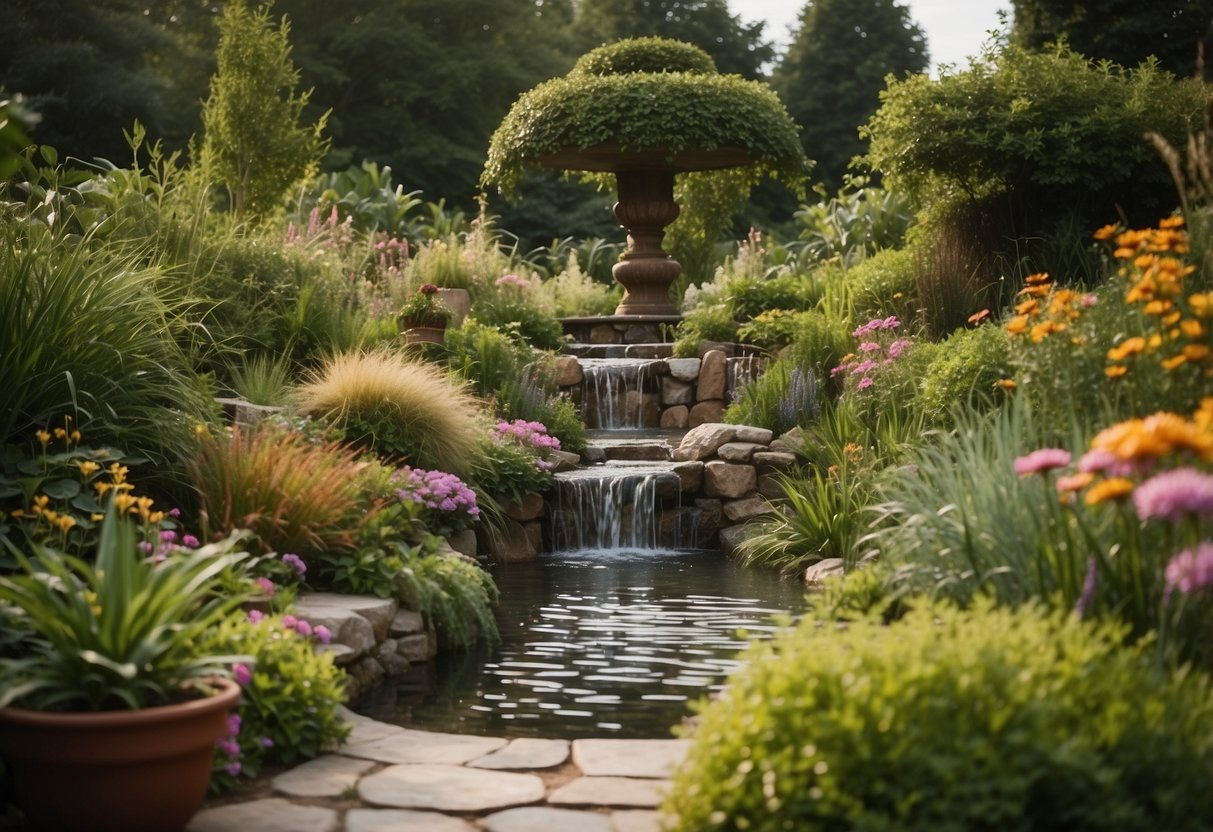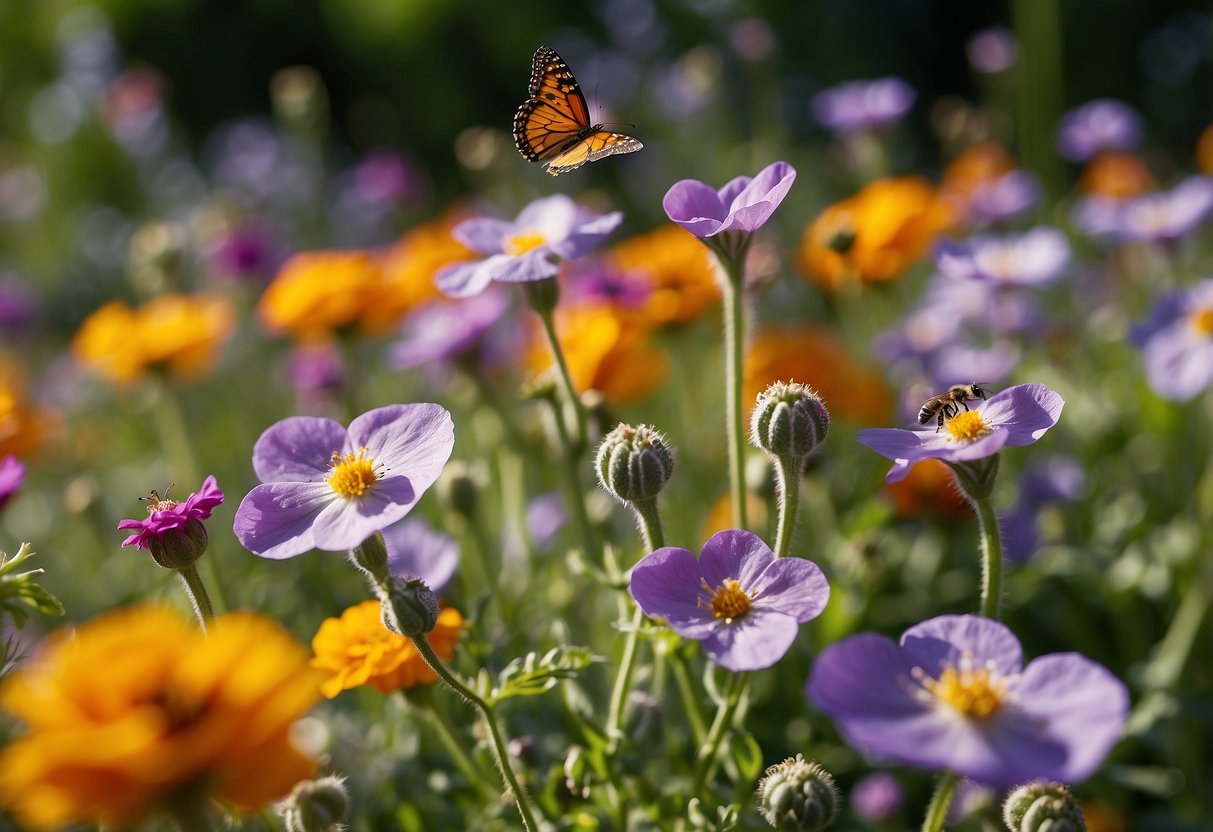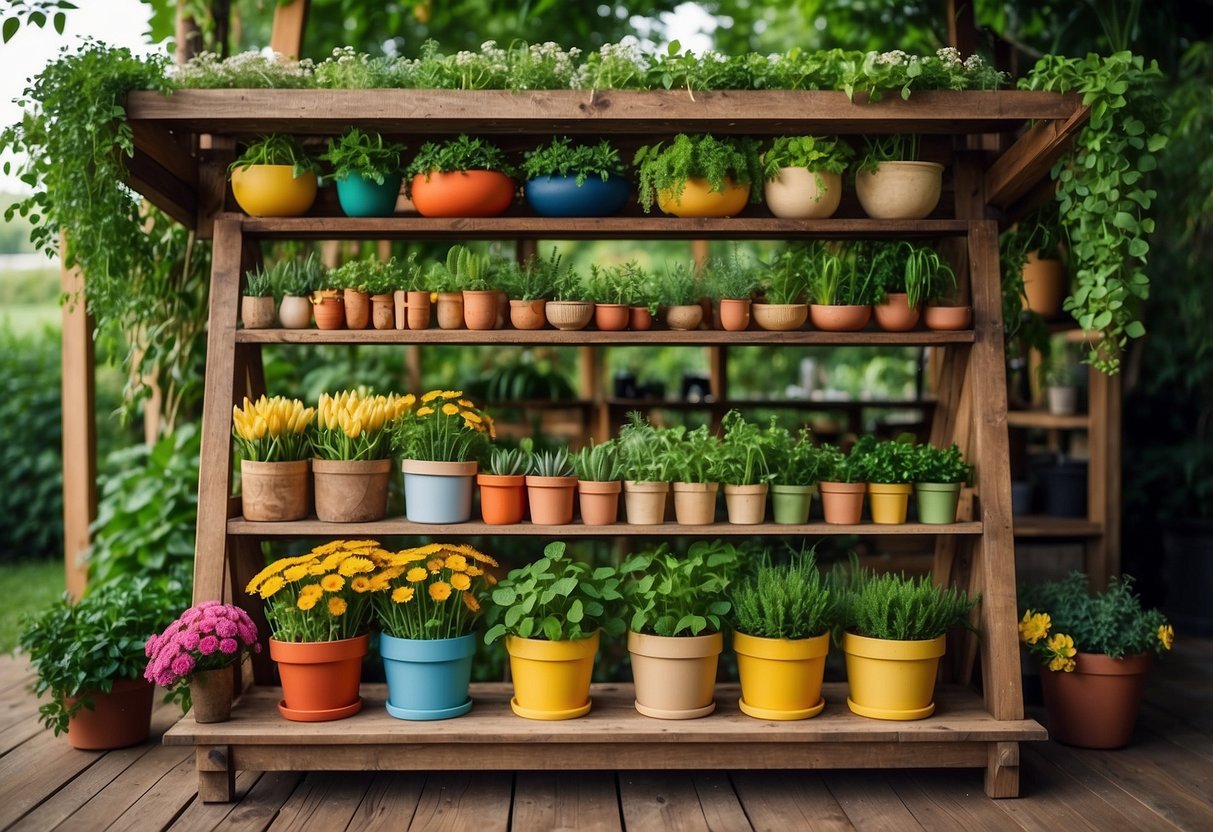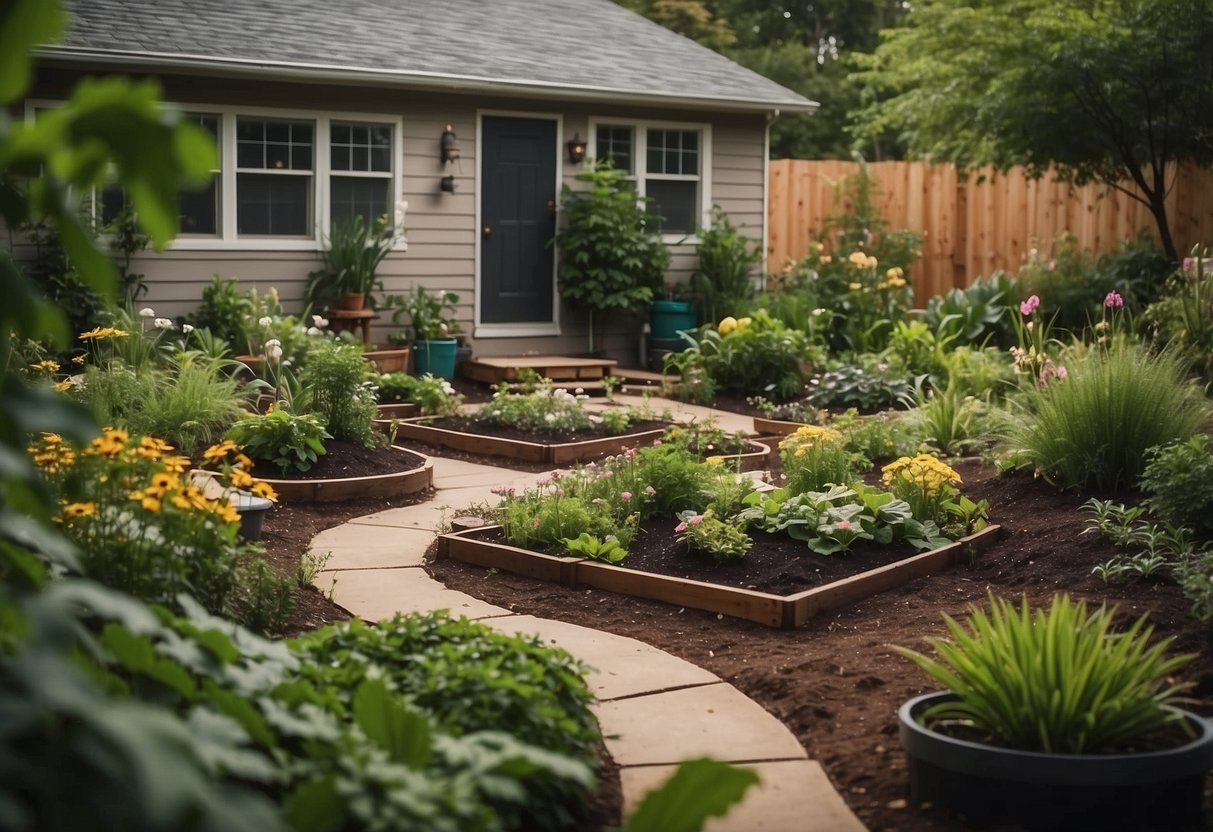Alternative Garden Ideas: Creative Ways to Transform Your Yard
Are you looking for fresh ways to revamp your garden? If you’re tired of traditional grass lawns, numerous alternatives can transform your outdoor space into a unique, low-maintenance haven. What are some creative options to make your yard stand out while being eco-friendly and practical?

Exploring alternatives to grass can make your garden more sustainable and easier to care for. You’ll discover ideas that not only beautify your space but also reduce your environmental footprint. Dive into a world of innovative garden designs and see how you can easily create a stunning yard without the hassle of maintaining a traditional lawn.
1) Vertical Succulent Walls

Vertical succulent walls are a great way to maximize space and add greenery to your home or garden. By using small pots or containers, you can create a unique display that fits any vertical surface.
You can use materials like wood shutters or even a simple frame to hold your pots. This easy DIY project can transform any dull wall into a vibrant living art piece. For some creative ideas, check out these DIY vertical succulent garden ideas. Enjoy the process as your plants thrive and beautify your space.
2) Herb Spiral

A herb spiral is a fun and practical way to grow your herb garden. It’s a raised bed that spirals upwards, providing different microclimates for various herbs.
You can make a herb spiral with materials like stone or wood. This design is also great for small spaces. You can learn more about building one and the best materials to use.
Growing herbs in a spiral shape allows better water drainage and sun exposure for each plant. This setup helps you make the most of vertical and horizontal spaces in your garden.
3) Recycled Pallet Garden

Turning old pallets into garden spaces is fun and eco-friendly. You can grow herbs, flowers, or even vegetables.
To start, just stack pallets and fill them with soil. This makes a simple and easy-to-use garden bed. You can grow plants from all sides.
Using pallets vertically is another cool idea. Attach pots and plant herbs like rosemary or basil. This makes the garden look colorful and fresh.
For added fun, paint your pallets. Bright colors can make your garden lively and inviting. Don’t forget to wear gloves to avoid splinters.
4) Fairy Garden

Creating a fairy garden is a delightful way to add magic to your outdoor space. Use ferns, moss, and creeping thyme for a lush, green ground cover. Include vining plants like morning glories or sweet peas to fill trellises beautifully.
Incorporate miniature accessories such as tiny houses and fairy doors for an enchanting atmosphere. Think about adding real or faux plants and flowers for color and vibrancy. Enjoy crafting your own miniature, magical world in your garden!
5) Upcycled Tire Planters

Upcycled tire planters are a fun and eco-friendly way to add charm to your garden. You can use old tires to create unique planting spaces for flowers, vegetables, or even small trees.
To start, clean the tires thoroughly to remove any dirt or residue. Then, paint them in vibrant colors to match your garden’s theme.
Place the tires directly on the ground or stack them to create raised beds. You can even hang them on walls or fences to make vertical gardens. These planters can hold a variety of plants from strawberries to succulents.
6) Wildflower Meadow

Creating a wildflower meadow is a fantastic way to add color and attract pollinators to your garden.
Wildflower meadows are usually perennial, meaning they come back year after year. You can plant a mix of native and non-native species for a vibrant display.
Fall is a great time to sow seeds in areas with cold winters, as seasonal rains will help in germination.
Adding flowers like field scabious, red campion, and black-eyed Susan can enhance the beauty and biodiversity of your meadow.
For additional ideas, check out how to plant a wildflower meadow.
7) Living Roofs

Living roofs, or green roofs, are a great way to bring nature to your home. They are covered with plants and help reduce heating and cooling costs.
There are different types of living roofs. An intensive green roof uses deep soil, which can support a variety of plants.
Living roofs also help with storm water runoff and create habitats for birds and insects. Adding one to your patio cover can make your space look unique and vibrant.
8) Edible Flower Garden

An edible flower garden is a delightful way to add beauty and flavor to your meals. You can grow flowers like pansies, violas, and violets, which have mild, slightly sweet flavors.
These flowers are perfect for salads or as garnishes for desserts. For a unique touch, try candied violets on cakes.
Including hostas in your garden is another great idea. Not only are their flowers edible, but you can also eat the entire plant. Integrate these flowers into your landscape for a tasty and visually appealing garden.
9) Vertical Vegetable Garden

A vertical vegetable garden is perfect for small spaces. You can grow a variety of veggies like tomatoes, peppers, and herbs in vertical planters.
Use wooden crates, old pallets, or even hanging pots. These setups can fit on balconies, patios, or against walls.
To make it easier, consider using a drip watering system. This helps keep your plants hydrated with minimal effort.
10) Raised Bed Garden

Raised bed gardens are a popular choice for many gardeners. You can create them using materials like wood, bricks, or even a kiddie pool.
One benefit is better soil drainage. This helps your plants grow strong and healthy. Raised beds also make it easier to reach your plants without bending over too much.
You can fill your raised bed with any soil you like, which is great if your garden soil is poor. Plus, it can add structure and beauty to your outdoor space.
Creative Vertical Gardening

Vertical gardening brings nature into your living space, maximizing small areas and adding aesthetic appeal. Discover the benefits and how to select the best plants for your vertical garden.
Benefits of Vertical Gardening
Space Efficiency: Vertical gardening allows you to grow more plants in less space. By utilizing walls or fences, you can transform even the smallest balcony or patio into a lush garden.
Aesthetic Appeal: Arranging plants vertically creates a striking visual impact. You can use all sorts of creative elements, like a pallet garden wall, to make your space look unique and inviting.
Improved Air Quality: Plants help purify the air. Incorporating vertical gardens inside your home improves indoor air quality, making it a healthier space for you and your family.
Accessibility: Vertical gardens are easier to tend. You can avoid bending down too much, which is great if you have back issues. Plants are at eye level, making maintenance a breeze.
Seasonal Flexibility: With vertical gardening, you can grow a variety of plants year-round. Some setups can be easily moved or adjusted according to the season, helping you make the most out of your gardening efforts.
Choosing the Right Plants
Climbing Plants: Ivy, morning glories, and clematis are excellent choices. These plants naturally grow upwards, making them ideal for trellises or walls.
Herbs: Basil, mint, and thyme thrive in vertical gardens. They’re compact, easy to grow, and perfect for culinary uses. Placing them closer at hand in the kitchen or patio is both practical and functional.
Compact Vegetables: Consider crops like cherry tomatoes, peppers, and leafy greens. These vegetables don’t require much space and do really well in vertical setups. Plus, you get fresh produce conveniently.
Ornamental Plants: Ferns, succulents, and flowering annuals add color and texture. For instance, using a wood slat fence with planters can provide a vibrant backdrop to your garden area.
Trailing Plants: Strawberries and sweet potato vine are great options. These plants not only beautify your vertical garden but also produce edible fruits or tubers, enhancing both aesthetics and utility.
Sustainable Backyard Habitats

Creating a sustainable habitat in your backyard can help support local wildlife and improve your garden’s health. Focus on planting native species and creating inviting spaces for pollinators.
Creating a Pollinator Garden
Pollinators like bees, butterflies, and birds play a crucial role in the ecosystem. To attract them, plant a variety of flowering plants that bloom at different times of the year. Choose flowers with different colors and shapes to appeal to a wide range of species.
Important Tips:
- Plant Flowers in Groups: Grouping similar plants together can make it easier for pollinators to find them.
- Include Water Sources: A shallow birdbath or a small water feature provides hydration.
- Avoid Pesticides: Chemicals can harm pollinators. Opt for organic methods to handle pests.
By creating a welcoming environment, you’ll help increase the population of beneficial insects and birds in your area.
Using Native Plants
Native plants are well-adapted to your local climate and soil, requiring less water and maintenance. They also provide the best habitat for local wildlife, including insects, birds, and small mammals.
Advantages:
- Lower Water Needs: Native plants thrive on natural rainfall, reducing the need for irrigation.
- Pest Resistance: These plants are more resistant to local pests and diseases.
- Supports Local Wildlife: They offer essential food and shelter to local animal species.
Popular Native Plants Examples:
- Wildflowers: Such as coneflowers and black-eyed Susans.
- Grasses: Like bluestem and switchgrass.
- Shrubs and Trees: Including serviceberry and oak.
Incorporating these plants creates a thriving, resilient garden that supports the entire ecosystem.
Innovative Water Features

You can transform your garden into a peaceful retreat with creative water features. From DIY fountains to natural ponds and flowing streams, these elements add beauty and tranquility to any outdoor space.
DIY Water Fountain Ideas
Creating your own water fountain can be a fun and rewarding project. One option is a well pump fountain. You can replicate an old-fashioned water pump using a non-working pump and a basin for water collection. This type of fountain gives a rustic, farm-like feel to your garden and offers unique water sounds echoing through the space.
Another idea is a stone stack fountain. Simply pile flat stones atop one another with a small pump feeding water from the bottom to trickle down the sides. It’s a minimalist yet elegant feature that suits any garden style. For something more modern, consider a pipe waterfall, where water flows down a series of metal pipes arranged artfully. These fountains not only look sleek but also create soothing water sounds.
Incorporating Ponds and Streams
Natural water features like ponds and streams can add a new dimension to your garden. A garden pond is an excellent choice. It provides a habitat for aquatic plants and wildlife, creating a mini-ecosystem in your backyard. You could include lilies, fish, and even a small waterfall to enhance the visual appeal. Ponds require some maintenance to keep the water clear and the ecosystem balanced.
If space allows, a meandering stream can add charm and movement to your landscape. By positioning rocks and plants along its banks, you can create a natural look that blends seamlessly into your garden. Streams can also help with drainage issues, directing rainwater away from flood-prone areas. Adding stepping stones or a small bridge can turn the stream into an interactive element for your garden.







